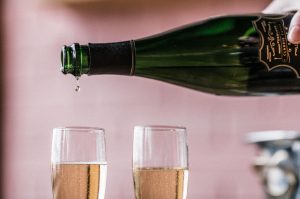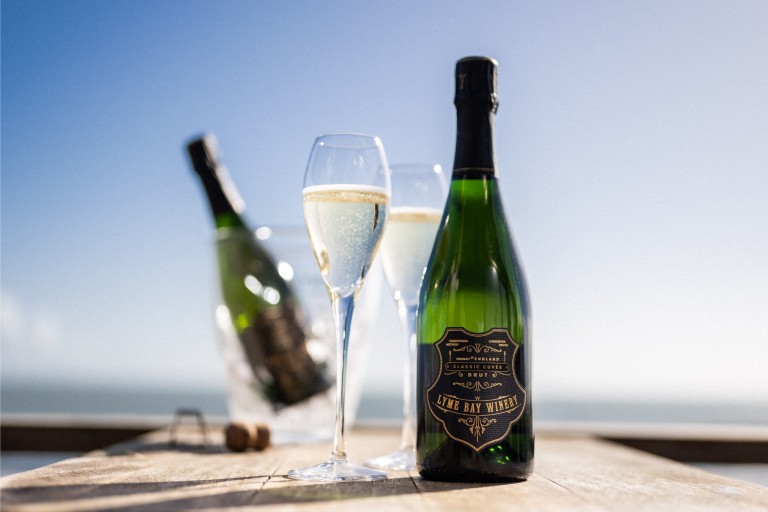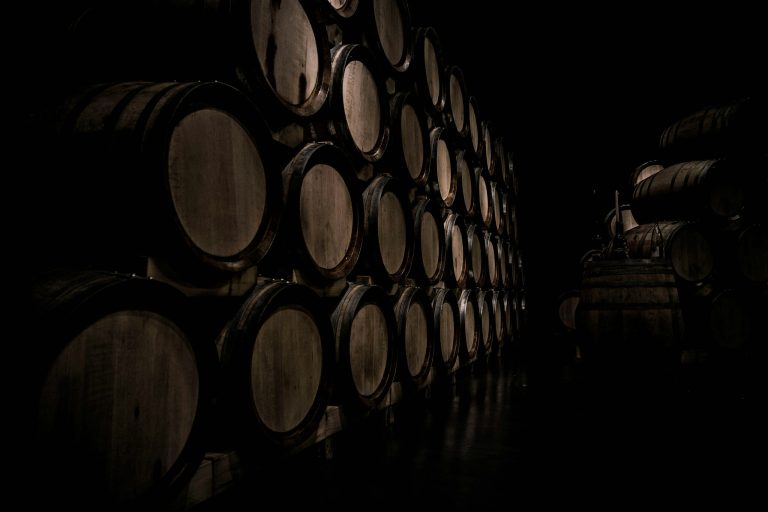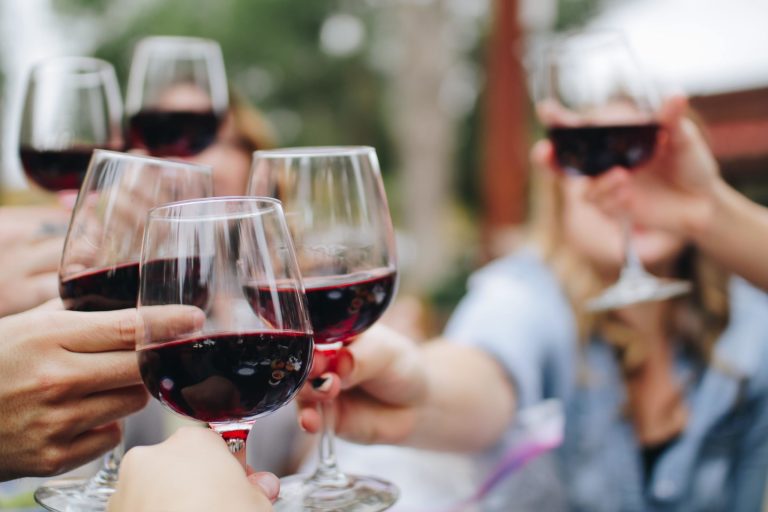For centuries the English were more focused on drinking wine than producing it, and in the mind of many non-British people, lukewarm ale was the only English beverage. It’s true that because of its cold climate, wine production in England was far from ideal. Nevertheless, due to the increase in temperature in the last decade, that’s changed dramatically.
Vineyards are becoming a common sight in counties such as Essex, Sussex, and Kent, where more varieties of wine can be produced because of the drier and warmer climate. Also, almost all the newer English winemakers are trained professionals, which has helped make the English wines more consistent in terms of quality.
English wine has definitely been on the rise the last few years, getting worldwide recognition. But what’s quite hard to believe is that two-thirds of all English wine and all of England’s best wine is sparkling, winning international awards, and even frequently beating Champagnes in blind tastings.
How did that happen, you ask? Several areas in the southern part of England have the same free-draining limestone chalk soils that you find in the Champagne region of France and, by choosing sunny, south-facing sites, the three classic Champagne grape varieties (Chardonnay, Pinot Noir and Pinot Meunier) can be successfully grown on English soil. Add a slight increase in temperature thanks to global warming, the high acidity of English wine, some serious viticultural expertise, the use of the “traditional method” wine-making techniques, and there you have it; high-quality sparkling wine can be produced in England.
And although English sparkling wine will likely never be a serious commercial rival to French Champagne because of the relatively small output, England, now in its third decade as a sparkling wine producer, is demonstrating that its bubbly output can be outstanding.
The history of English sparkling wine
Although Christopher Merret (1614-1695), an English physician and scientist, documented the deliberate addition of sugar to produce sparkling wine in a paper about secondary fermentation in the bottle at the Royal Society as early as 1662, England did not develop any significant commercial production of sparkling wines until the late 20th Century.
Since the revival of English viticulture in the 1950s, vineyards have been dominated by early-ripening, white wine grape varieties like Bacchus, Seyval Blanc, Müller-Thurgau and Reichensteiner, which can survive the country’s marginal climate. In 1984, David and Linda Carr Taylor were the first in England to produce sparkling wines in their vineyard in East Sussex using the traditional method. However, they were using Reichensteiner and Schönburger grape varieties and not the classic Champagne grape varieties.
That changed in 1988 when Stuart Moss, a wealthy Chicago venture capitalist, and his wife Sandy planted in Nyetimber, near Pulborough in West Sussex, the three classic Champagne grape varieties Chardonnay, Pinot Noir, and Pinot Meunier. They saw in the area the perfect soil, limestone chalk, which is identical to the one in the Champagne region of France, and an ever-improving climate for the growing of these grape varieties. The first wine from Nyetimber was released in 1997 and won an IWSC (International Wine and Spirit Competition) Gold Medal.
English sparkling wine today
Fast forward three decades, and you’ll find in England a thriving, fast-growing industry that makes world-class sparkling wines. Bottle-fermented sparkling wines have become England’s strongest suit in the last ten years, especially those made from Chardonnay and Pinot Noir. These two grape varieties combined with Pinot Meunier (another traditional champagne grape variety) now represent more than 71.2% of all vines planted in the UK.
The excellent quality of English sparkling wine combined with the fact that the temperature in northern France is increasing makes southern England a ‘sweet spot’ for the growth of Champagne grape varieties. French Champagne companies have been reportedly eyeing up vineyards in the south of England. Taittinger became the first of the elite Champagne houses to establish an English winery in Chilham, Kent, which will release its first bottles in 2024.
The similarities
As we mentioned before, English sparkling wines and Champagnes mainly use the same three grape varieties (the black grapes Pinot Noir and Pinot Meunier and the white Chardonnay). However, small amounts of other grape varieties can be added. Also, the grapes used for the production of both Champagne and English sparkling wine are produced in similar climates and grow on the same type of soil.
Secondly, the majority of English sparkling wines are produced using the “traditional method”, which is the same process used to make Champagne: a first fermentation in the tank, followed by the addition of the liqueur de tirage, which is a syrupy mixture of wine, sugar and yeast that is added to sparkling wines to cause a secondary fermentation that induces carbonation, and then followed by a period of ageing.
The method was initially known as the “méthode champenoise”, but the Champagne producers have successfully lobbied to restrict the use of that term within the EU only to wines produced in the Champagne region. Consequently, sparkling wines from elsewhere must use the term “traditional method” (méthode traditionnelle) or the local language equivalent.
And although English sparkling wine producers cannot use the term “Champagne” for their products, they do use their French counterparts’ terminology. You can find excellent English Classic Cuvée, Blanc de Blancs, and Blanc de Noirs. And similar to Champagne, English sparkling wines use grapes harvested in a single year (Vintage), but some non-vintage (NV) are also available.
For those unfamiliar with these terms, Classic Cuvée designates that the wine has been made solely from the three traditional champagne grape varieties of Chardonnay, Pinot Noir, and Pinot Meunier. Blanc de Blancs indicates that only white grapes have been used, often exclusively Chardonnay, while Blanc de Noirs characterises white sparkling wines made from dark grapes, usually Pinot Noir.
The differences
To begin with, the main difference is clearly the name. Champagne is named after the historical provenance of Champagne in the northeast of France. The only sparkling wines that are legally allowed to be called Champagne are the ones made in the region.
And obviously, the Champagne region has been producing sparkling wines for much longer than the English producers. The Champagne house of Gosset was founded in 1584 (although initially only as a still wine producer) and is still in operation today. Ruinart is the oldest Champagne house, exclusively producing Champagne since 1729. That means that although English sparkling wines are undoubtedly of very high quality, there is a lack of older English bottles.
As we mentioned before, English producers are using the same grape varieties grown in similar climates and soils as their French counterparts. Yet, we can’t ignore the fact that Champagne vines are much older than the English ones. That means their roots have reached deeper into the soil and possibly are picking up characteristics from deeper strata.
Although both require high acid-base wines that maintain their acidity even after the second fermentation, English sparkling wines and Champagne can taste differently. Of course, each producer has their own distinct tasting notes, but both English sparkling wine and Champagne share the same tasting notes range, from toasted caramel brioche aromas and candied almonds to citrus, apple pear, and orange zest.
Nevertheless, English sparkling wines tend to have more distinct fresh apple notes and more noticeable acidity on the palate but more subtle lees character. Lees is the deposit of dead or residual yeast particles. As the yeast cells start to break down during autolysis, they release small amounts of sugars and amino acids which can add textural weightiness (or increased body) to the wine.
English sparkling wine at Lyme Bay Winery
In the end, the best way to find out if English sparkling wine is any good is actually to try it. Here at Lyme Bay, we work hard to produce award-winning premium sparkling English wines, and we invite you to give them a taste! Our English sparkling wines are all bottle-fermented following the traditional method, are aged for extended periods of time to build complexity and flavour, and have won countless international awards since their launch.
Since 2015 we’ve been working with some of the best English winegrowers all over the country to get the best fruit rather than relying on what is grown in our own vineyards. That way, we can access the best grape varieties and use them to make exceptional, full of character English sparkling wines that suit every palate and occasion.
After all these years, our philosophy remains the same:
We source the best English grapes to make the best possible English wines.
Discover our full range of English sparkling wines here.



